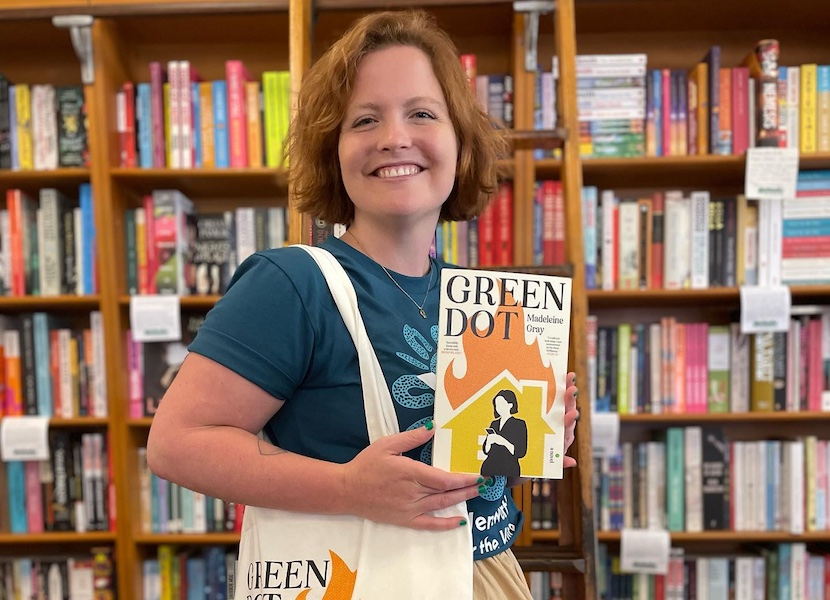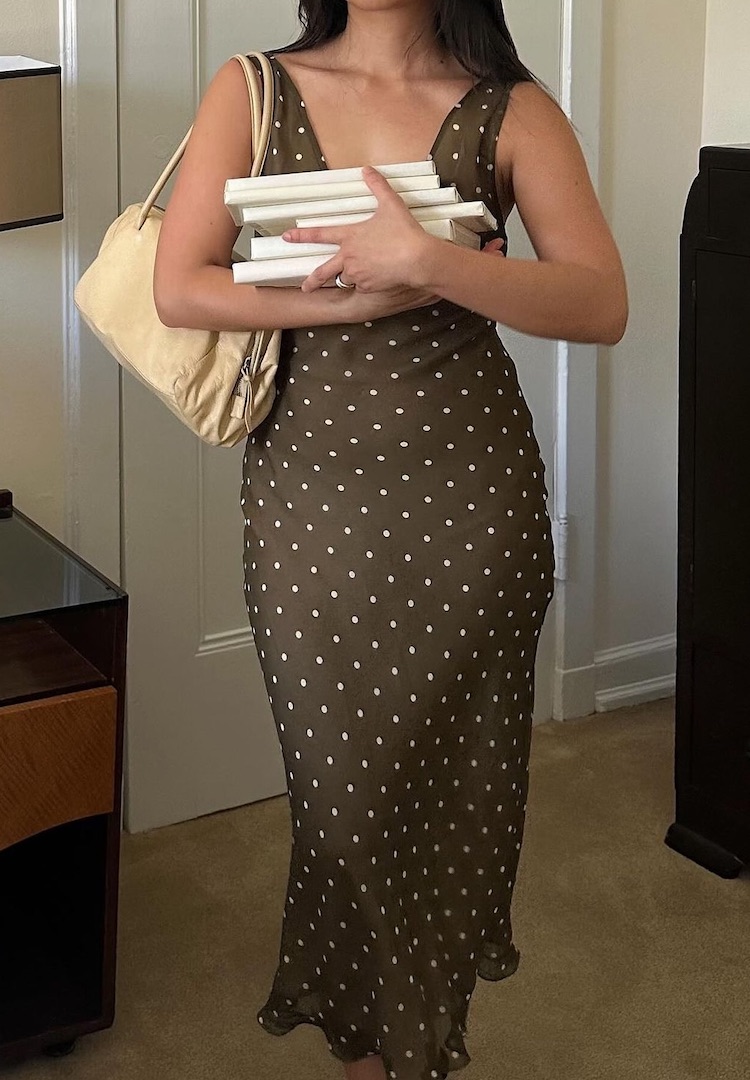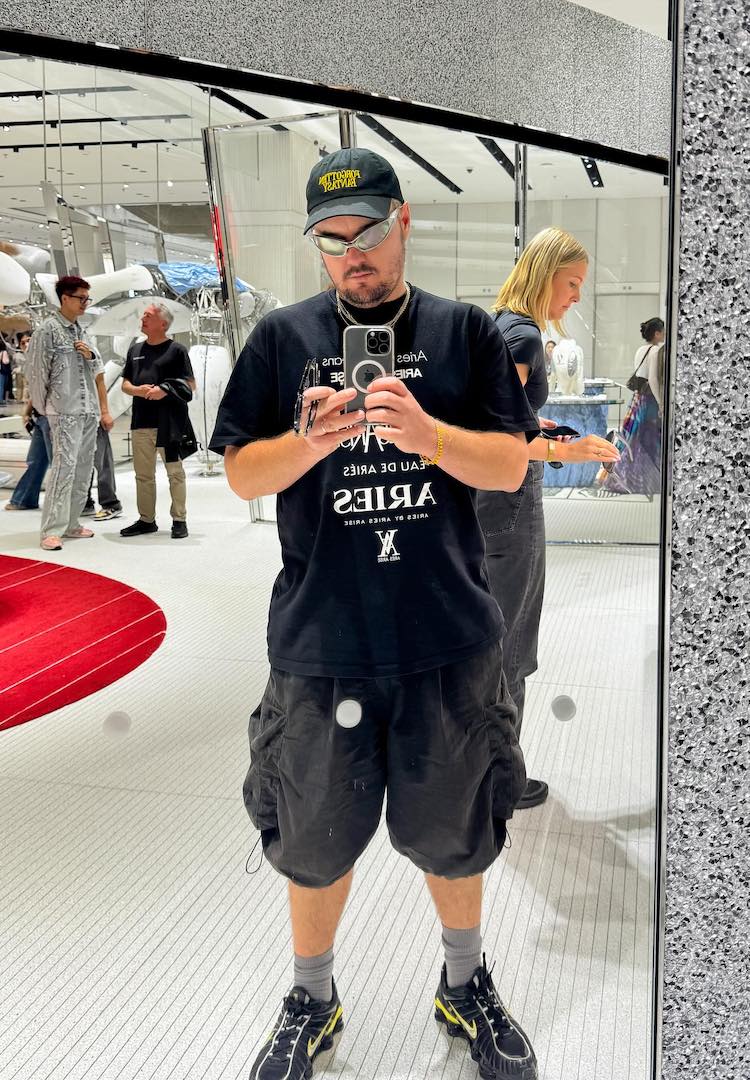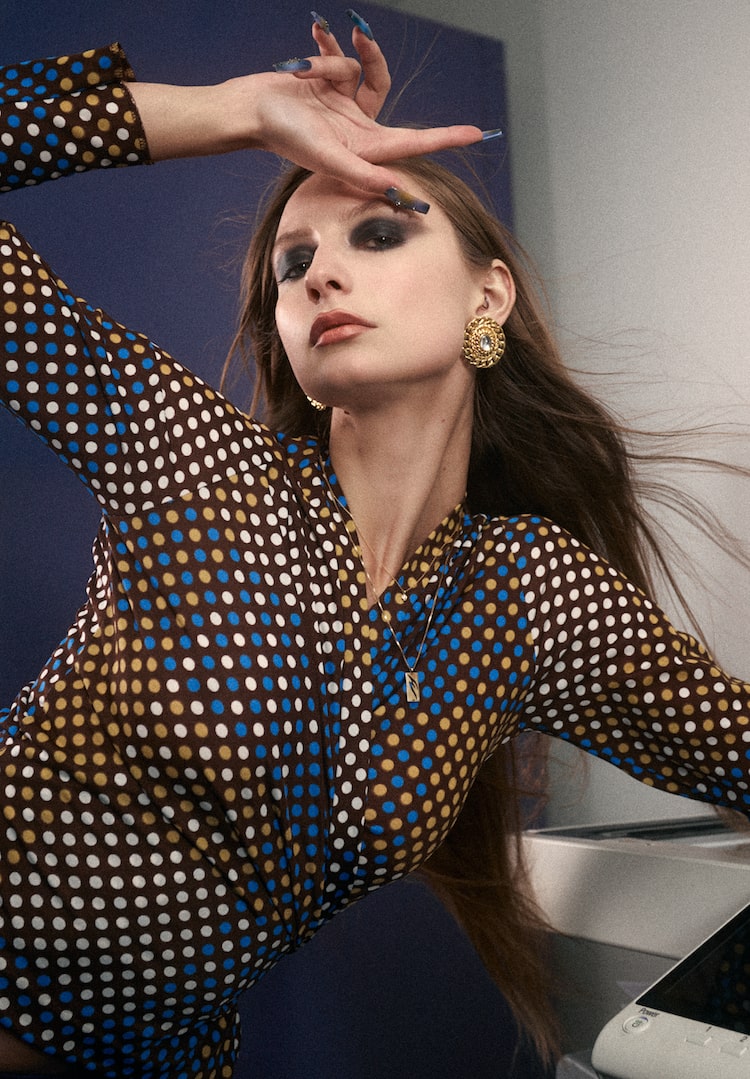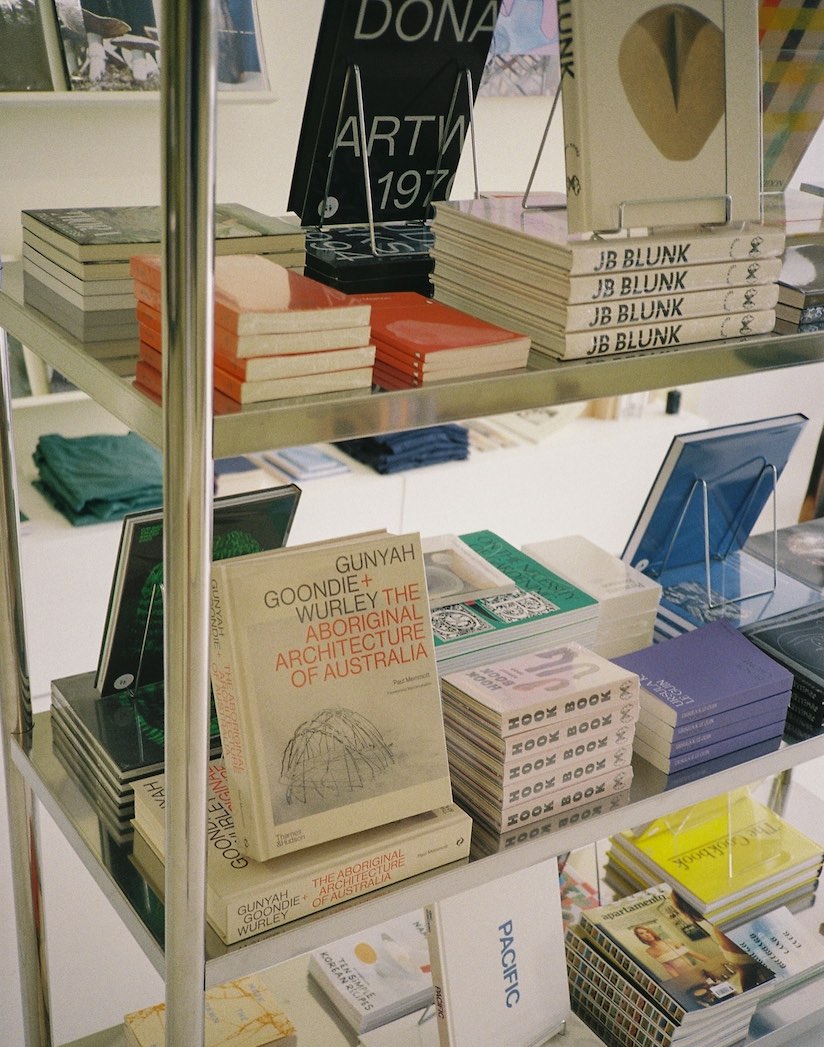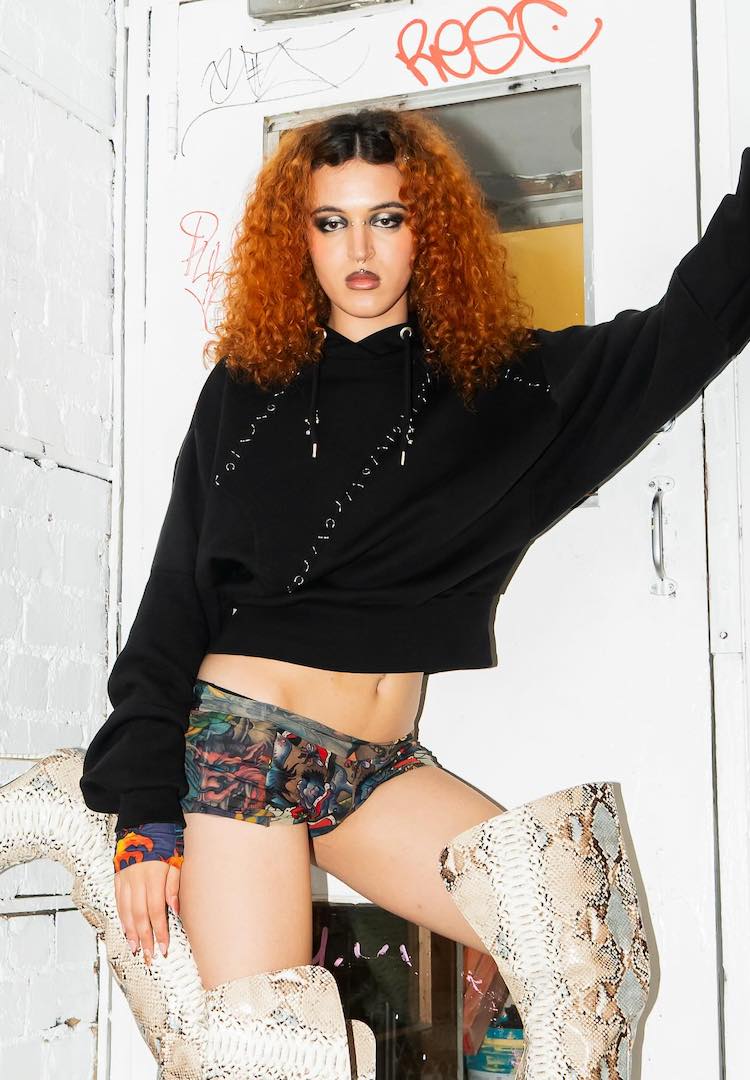How important is a book cover? Two designers weigh in
image via @madeleine_gray_/INSTAGRAM
words by daisy henry
“I know a lot of great books with the wrong cover.”
Try as I may but I will always judge a book by its cover. There’s nothing like a nice font, fun colour palette or beautiful photo to draw me in. From there, the blurb needs to do some heavy-lifting, sure. But when browsing the shelves at a bookstore, or when admiring my own stacks at home, a beautiful cover will always carry sway.
Though I love hearing about the process behind some of my favourite books (most recently, I spoke to Bri Lee about her new fiction novel, Seed), I’m just as curious about the designers behind them. After all, covers are often the first impression you have of a book.
Want to read more about how others navigate the world? Head to our Life section.
Naturally, I went to my own shelves, pulling out my copies of some of my favourite books by Australian writers. Sitting on the floor surrounded by books, there were two designers whose work kept popping up: Mietta Yans and Alissa Dinallo.
Having worked in the industry for seven years, Mietta Yans is the creative mind behind Georgia Grace’s The Modern Guide to Sex, Brooke Blurton’s memoir Big Love and both of Genevieve Novak’s bestsellers, No Hard Feelings and Crushing.
Alissa Dinallo on the other hand, has been designing covers for over 12 years. Having first started in 2013, she’s the recipient of several accolades, including the Australian Book Designer’s Association Award for Young Designer of the Year and best designed Commercial Fiction Cover. You’ll likely recognise her work from Madeleine Gray’s Green Dot, Amy Taylor’s Search History and Hannah Ferguson’s Bite Back (to name a few).
Mietta Yans, freelance designer
Fashion Journal: Do you judge a book by its cover?
Mietta: Absolutely! I think that’s the entire point. Not to say a great book can’t have a bad cover but what’s the point of my work if not to provide a visual that (hopefully!) appeals to the right audience? Please, judge away!
What’s your favourite part of the process?
I love the moment when you receive a printed copy of the book for the very first time.
View this post on Instagram
Where do you typically find inspiration?
In most cases I’ll receive a manuscript before I start designing, as well as notes on key elements, events and imagery from within the book. I’ll usually read at least some of the manuscript, so I can get an idea of the tone of voice I’m trying to encapsulate within the design.
After I have my head around the content of the book, I usually jump onto Pinterest or other online visual archives to help kickstart my brain into ideas mode. Generally, though, I feel like I’m almost always on the lookout for design inspiration. I try and take note of things happening in other creative spaces such as fashion, music and film to draw from. If something culturally exciting is happening in one creative space, I find it usually ends up informing another.
Do you put more importance on the text or the imagery in a cover?
I’m definitely a large type at the forefront kind of designer, although I think the really great thing with book design is that there’s no right or wrong way to approach this. Aside from some very loose conventions around ‘what makes a book cover’ (that really just comes down to including a title and the author’s name), it’s totally up to you how you go about it. I tend to admire designers who focus more on imagery, though, so perhaps there’s something in that — admiring most what you don’t do yourself!
Do you have a favourite cover you’ve designed? What makes it a favourite of yours?
My favourite is the cover I designed for The Modern Guide to Sex by Georgia Grace (published by Harper by Design). The team who worked on this book were totally dreamy, including Georgia herself. The covers I love most of my own tend to be the ones involving organic collaboration, where I get to bounce my ideas off others and eventually land on a design we’re all really proud of.
View this post on Instagram
Book cover trends seem to continuously to evolve. Illustration seemed really popular at one point, then it was ‘sad girls’. What’s next?
I feel like I’ve noticed a bit of a moment for utilising old paintings, contrasted with unexpected modern typefaces and bold colours. I’ve also noticed quite a lot of collages and craft influence floating around, too. It’s kind of interesting to me though, the concept of trends.
You work on covers so long before the book is released, so it’s always crazy to see a consistent theme pop up across works from a range of designers. It’s like, ‘Hey! Other people noticed/loved/were really vibing with this particular thing at that moment too!’. I love to see it, personally.
Alissa Dinallo, freelance designer
Fashion Journal: How much input does an author typically have when it comes to book cover designs?
Alissa: It varies from project to project. Sometimes the author is very involved, other times their involvement is a lot less. Most often, I will receive a moodboard from the author and publisher along with the brief, that gives me an idea of what the author is looking for in terms of look and feel for the cover. I think it’s so important for the author to share their ideas for the cover direction, as they have such a close relationship to the manuscript that nobody else has. When it comes to choosing the final cover, the author almost always has a say, along with sales and marketing, and the publisher.
View this post on Instagram
What’s your usual process for designing a book cover? How long does it take, roughly?
Generally, the process starts with a brief and a manuscript (or a synopsis and text sample). Briefs will vary from book to book, but each will aim to outline the basics, like the book title, subtitle, the author’s name and any other text that needs to go on the cover, along with the format of the book, the genre and key deadlines and pub dates. These briefs will almost always include covers and books that are currently on the market that sit within a similar spectrum to the cover/book you are working on.
From there, I’ll usually take between two to three weeks to come up with a first round of concepts. I’ll usually have a pretty good idea of how I want to approach this cover, and I’ll come up with three to five conceptual approaches with variations. Once these concepts have been delivered, the publisher and the author will give feedback and there is generally a back and forth with the publisher, author and sales and marketing until we reach a final cover.
With the front cover done, there is the spine, back cover to complete, plus any other additional elements such as inside cover, hardback case, jacket etc. All up, from brief to print date, the process generally takes an average of three to six months.
Where do you typically find inspiration?
If I’m working on a fiction cover, I definitely like to pull imagery from the story, I think that’s the best part of book design, being able to translate written ideas into a visual format. I also like to keep across trends by visiting bookshops, but also following other designers, publishers, authors and online book clubs/influencers on socials, and seeing the amazing work they are putting out, and what is resonating with audiences.
I’m also a big fan of mood boards. I like to collect screenshots of inspiration and general vibes, and pull them all together in an inDesign document before I start a cover. This really helps distill my ideas and consolidate my approach.
View this post on Instagram
What do you think about book cover trends? Is there a certain style or feature you’re noticing pop up at the moment?
I always find this question so hard to answer as I try not to think in trends but inevitably my design is always influenced by them! In terms of fiction book covers, I think illustrated covers have definitely been more popular over the past few years but I do think we’re seeing a slow shift back towards photography.
I still think big, bold, considered type and fun colour combinations are popular, as it works well with online share-ability. With the rise of online book club, reading influencers and Book Tok, online-sharability is such an important factor to consider when designing a cover. I have also seen a real surge in conversations around horror books, and I feel as though we might see some design trends that lean in that direction.
Do you judge a book by its cover?
Of course. But I know a lot of great books with the wrong cover.
For more on book cover trends, head here.







